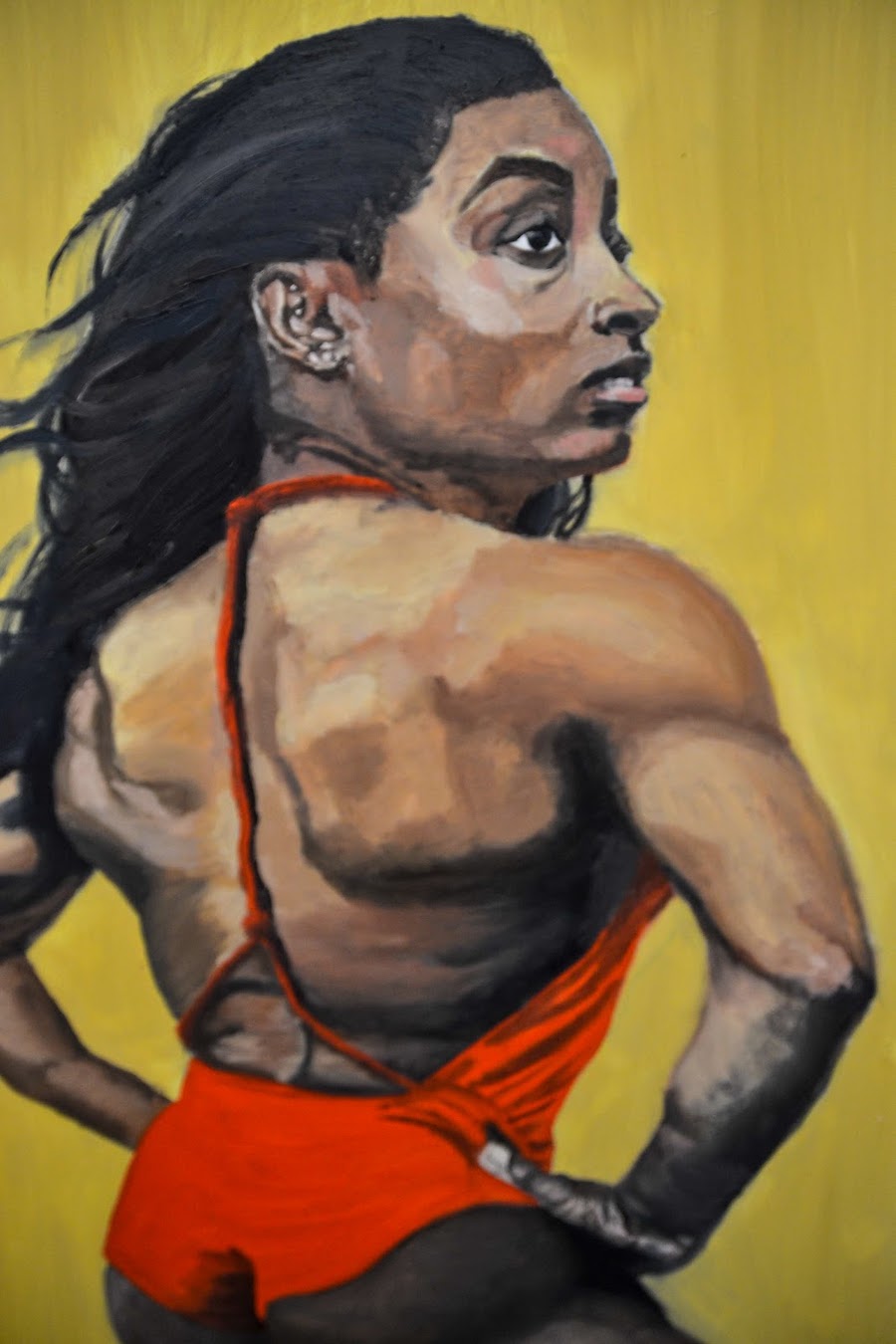Local artists explore racial justice in Noyes Cultural Art Center exhibit
Jack Austin/Daily Senior Staffer
Sarah Kaiser-Amaral standing in front of her painting, “Serenity Prayer.” The painting is on display as part of the “What is Racial Justice?” exhibition at Noyes Cultural Arts Center.
October 27, 2021
Noyes Cultural Arts Center’s newest exhibition, “What is Racial Justice?,” seeks to spark conversations around race, power and equity.
More than 20 artists from Evanston and the greater Chicago area contributed to the show, curated by Fran Joy, a member of Evanston Made and a former member of the Evanston Arts Council.
One of Joy’s pieces for the exhibition, “Spirit of Justice,” depicts a Black woman with angel wings. Etched inside the wings are Joy’s conceptions of racial justice, like ending gerrymandering, redlining and unfair incarceration.
“Art crosses boundaries and brings people together,” Joy said. “You don’t have to go back 50 years to find racial injustice.”
Another one of the paintings, “Man in the Mirror” by Sarah Kaiser-Amaral, depicts a white policeman looking at himself in the mirror and developing a conscience, according to the painter.
Claudia Marter, a junior at Evanston Township High School, said social justice issues have become more important to her as she has grown as an artist. Marter added that more unity is needed to address social justice issues. Divided, she said, nothing will change.
For the exhibition, Marter created an oil painting of Simone Biles, which she said represented the gymnast’s strength and resilience. Marter highlighted the racial injustice that Biles faces, specifically that the International Gymnastic Federation Judges lowered the difficulty level of moves Biles excelled at to even the playing field for gymnasts competing against her.
Biles is the only woman to attempt the Yurchenko double pike due to its difficulty. But Marter said judges diminished the difficulty of the move to unfairly restrict Biles.
“As soon as a Black woman steps up and is excelling in an area in which mostly White men had exceeded, they change the entire point system to favor everyone else,” Marter said. “Racial justice means equity and equality.”

Joy said racism persists, and she tackles it in her art. The past 10 years of her artistic practice has focused on social justice issues. Two of her paintings from that period are featured in the show. One, “Value My Life,” represents all children of color who lost their lives to gun violence.
When Kaiser-Amaral feels like the “world is on fire,” she often turns to painting as a way to process.
“Art fills a lot of roles in society,” she said. “In really turbulent times, we need to use our art platform as a voice and try to make people aware, try to break through that bubble.”
In her painting of Biles, Marter conveys the struggles of the star athlete. An alternate title she considered for the piece, “Eloquent Silence,” reflects how Biles is peaceful and can exude such a strong presence without saying anything, the artist said.
For Marter, Biles represents strength and growth. Marter said she was impressed by Biles’ confidence and will to succeed in spite of racial and gender discrimination, as well as mental health struggles.
“(Art) should play a big role (in advancing racial justice). Art will eventually bring us together,” Marter said. “Art is the truest expression. It can be something everyone can understand because of how personal it is.”
Kaiser-Amaral and Joy paint images of children who lost their lives to gun violence for Faces Not Forgotten. The organization creates quilts composed of eight of these portraits, representing the eight children that die from gun violence in the United States every day.
The exhibition’s Oct. 15 opening brought together artists and members of the community together, Joy said.
“I wanted people to get in touch with their spirituality. Everybody came together to examine and explore this concept of racial justice,” Joy said. “You could see in the room that they had been moved. That was everything to me.”
Email: [email protected]
Twitter: @JackAustinNews
Related Stories:
— Evanston Made artists open their studios to the public
— Q&A: ArtOfRochelle explores what it means to be a maker during the pandemic












